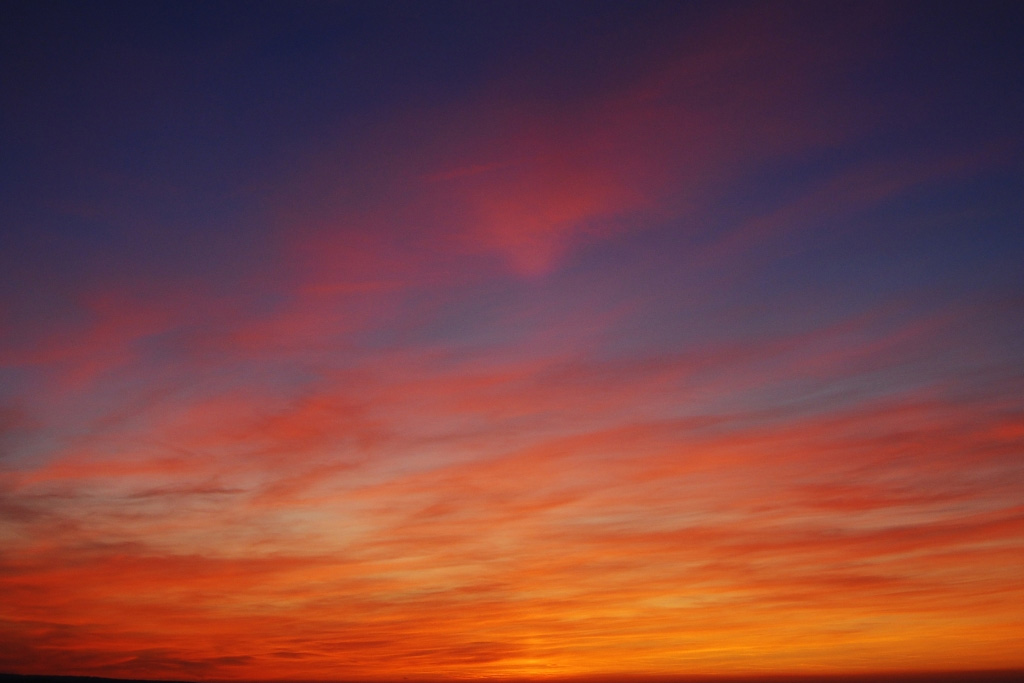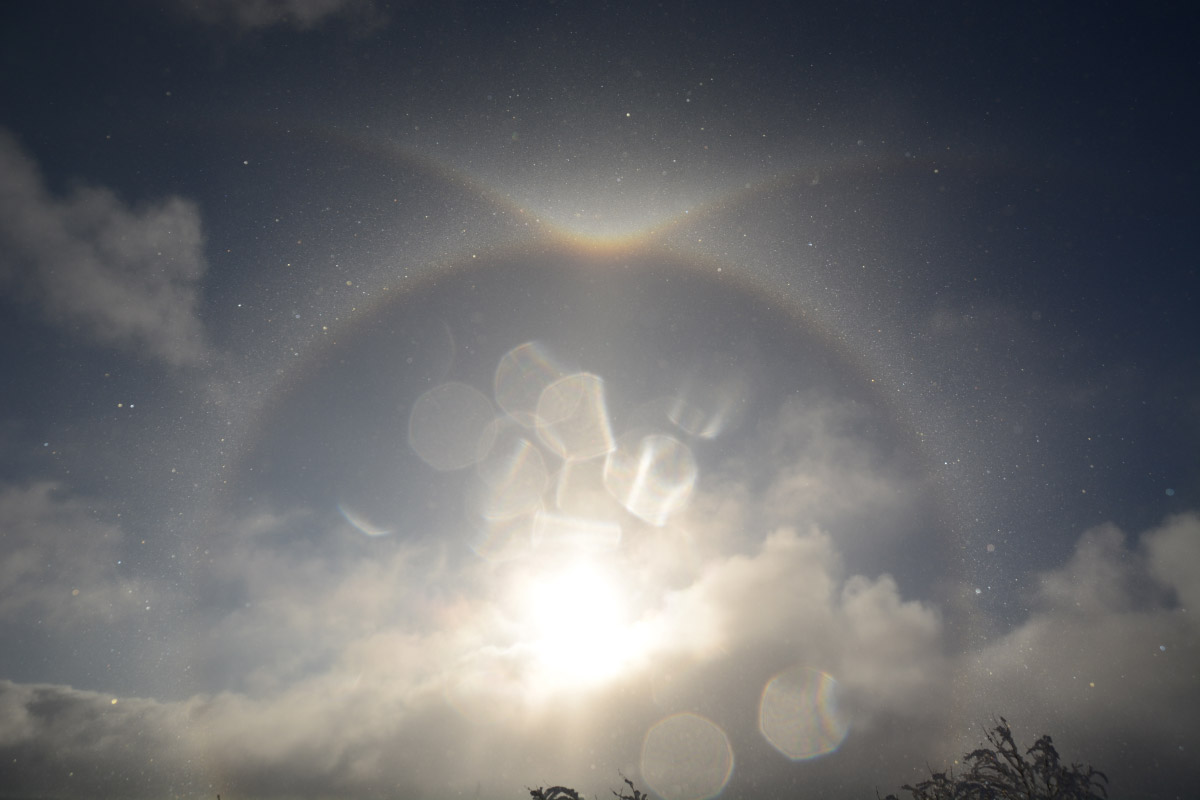On the
22° ring is a type of halo that can take on a variety of forms. Depending on the height of the sun, it presents a different picture. At a sun height of up to 32°, this halo phenomenon is referred to as the lower and upper tangent arc of the 22° ring, and at heights above this, as a circumscribed halo. When the sun is low, the two branches of the upper tangent arc form a sharp angle. As the sun's height increases, the branches becom closer to the 22° ring. At the same time, they grow longer and meet at a sun height of 32° with the
lower tangent arc. The resulting closed ring is called a
circumscribed halo. It touches the 22° ring above and below the sun. Initially, the circumscribed halo is still oval. As the sun's height increases, it becomes progressively more circular and comes closer to the 22° ring. At a sun height of 70°, the circumscribed halo almost merges with the small ring. The circumscribed halo, like the tangent arcs, is more strongly colored than the 22° ring. Towards the sun, it is reddish and bluish on the outside.
The contact arcs and the circumscribed halo are formed in
horizontally oriented column crystals. The refraction angle is 60°. The light enters a prism face and exits at the next but one. The light takes the same path with the
parhelia and the 22° ring. The various types of halos result only from the different orientation of the crystals.




